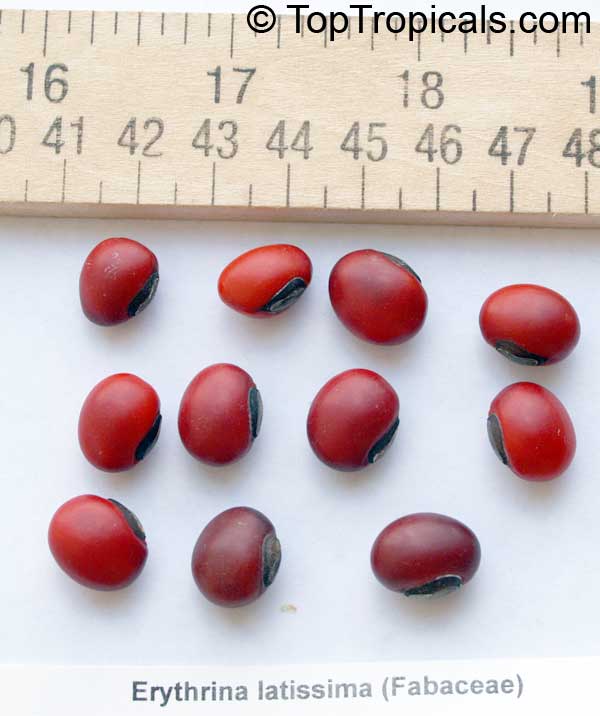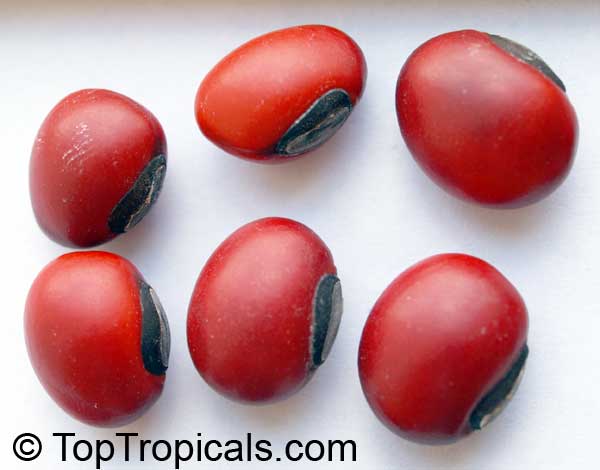Erythrina latissima (Coral Tree )
Top Tropicals Plant Encyclopedia
Botanical name: Erythrina latissima
Common name: Coral Tree
Family: Fabaceae
Subfamily: Faboideae
Origin: South Africa







Erythrina latissima, also known as the Coral Tree, is a deciduous semi-evergreen tree that grows in USDA Hardiness Zones 9 through 11. It is a relatively small tree that can reach heights of 10 to 20 feet with a symmetrical, domed canopy. The leaves are typically composed of three leaflets, which are wider than long and pubescent when juvenile. Along the veins, the leaves are prominently visible.
The tree's most distinguishing features are its coral-red flowers that form in abundant, robust racemes. The flowers of the Coral Tree bloom in late winter and early spring, when the tree is almost bare of leaves. Not only are the flowers attractive, they also produce an aroma that is quite sweet. Not surprisingly, they attract a wide array of birds and butterflies.
Soil and water requirements for the Coral Tree is also fairly simple. It prefers well-drained soil and moderate watering. They prefer full sun and good air circulation, ensuring that they get maximum protection from disease and pests. Because of its frost sensitivity, the Coral Tree should be avoided in colder climates Indiana and other states with cold winters and cool summers will not provide a hospitable environment for the tree to thrive.
In climates where the Coral Tree may be prone to frost damage, it can be grown in a container, which can be moved into a protected environment during winter. In these regions, it is best to give the tree a sunny spot, with lightly moist soil and plenty of airflow. It should also be made sure to prepare the roots for winter and provide the tree with proper protection from the wind a layer of mulch around the trunk will help to shield and protect it from the elements.
Not only is the Coral Tree a beautiful ornamental tree popular with gardeners, it also has ethnomedical uses in some parts of the world. Extracts from this plant have historically been used to treat a variety of ailments, such as fever, diarrhea, malaria, and skin infections.
As a result, the Coral Tree is both a stunning specimen with its brilliant, deep red flower displays and an interesting ethnomedical plant. It's no wonder why this small evergreen tree is in high demand with gardeners, and rightly so few trees can boast such a vibrant display of colors and medicinal properties.
Similar plants: Erythrina latissima (Coral Tree )
- Butea monosperma (Flame of the Forest)
- Erythrina abyssinica (Coral Tree)
- Erythrina amazonica (Amazon Coral Tree)
- Erythrina bidwillii (Indian Coral Tree)
- Erythrina caffra (South African Coral tree)
- Erythrina coralloides (Naked Coral Tree)
- Erythrina crista-galli (Cry Baby Tree)
- Erythrina decora (Namib Coral Tree)
- Erythrina edulis (Chachafruto)
- Erythrina fusca (Cape Kaffirboom)

